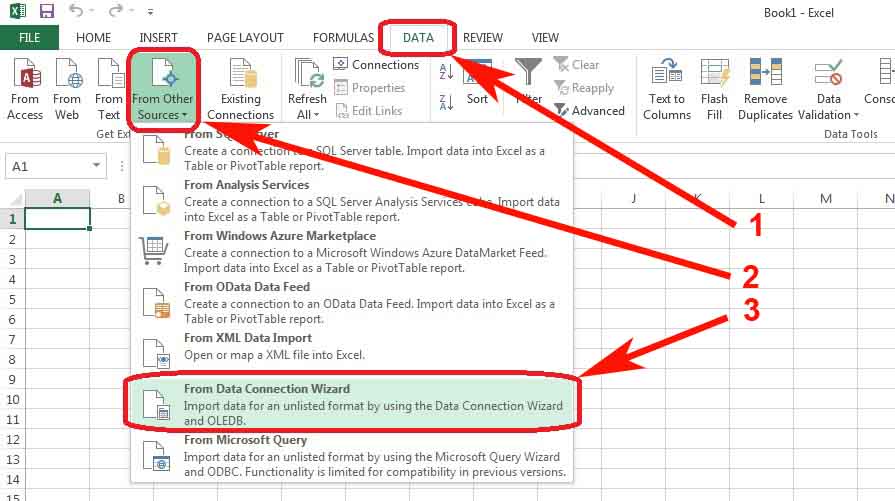5 Tips to Master ODBC Connections

In the ever-evolving landscape of data management and connectivity, the Open Database Connectivity (ODBC) interface remains a cornerstone for developers and data enthusiasts. This powerful tool, with its versatile nature, has facilitated seamless data access and exchange across various systems and applications. In this article, we delve into the intricacies of ODBC connections, offering practical insights and tips to help you master this crucial aspect of data management.
Understanding the Essence of ODBC Connections

ODBC, a standardized interface, acts as a bridge between applications and database management systems (DBMS). It empowers users to query and manipulate data stored in diverse databases, be it Microsoft SQL Server, Oracle, MySQL, or others, using a common set of API functions. This uniformity simplifies the process of data integration and sharing, eliminating the need for application-specific database drivers.
However, harnessing the full potential of ODBC requires a strategic approach. In this guide, we present five essential tips to help you navigate the intricacies of ODBC connections, ensuring efficient and secure data handling.
1. Choose the Right Driver

The foundation of a robust ODBC connection lies in selecting the appropriate driver. ODBC drivers serve as translators, enabling communication between the application and the database. Each driver is tailored to a specific DBMS, so it’s crucial to match the driver with the database you’re targeting.
For instance, when connecting to a Microsoft SQL Server database, opting for the SQL Server Native Client driver ensures optimal performance and compatibility. Similarly, for MySQL databases, the MySQL Connector/ODBC driver is the recommended choice. The right driver not only enhances connectivity but also ensures data integrity and efficient query execution.
Driver Installation and Configuration
Installing the ODBC driver is a straightforward process, typically involving a simple download and setup procedure. However, proper configuration is key. This involves specifying connection details, such as the database name, server address, and credentials, ensuring secure and authorized access.
| DBMS | Recommended Driver |
|---|---|
| Microsoft SQL Server | SQL Server Native Client |
| Oracle | Oracle Instant Client |
| MySQL | MySQL Connector/ODBC |
| PostgreSQL | psqlODBC |

2. Optimize Connection Pooling
Connection pooling is a strategy to enhance ODBC performance by reusing existing connections instead of establishing new ones for each query. This approach not only reduces the overhead of connection establishment but also minimizes resource consumption, leading to improved efficiency.
By leveraging connection pooling, you can create a pool of pre-established connections, allowing your application to quickly access and reuse these connections for subsequent queries. This method is particularly beneficial in scenarios with frequent, short-lived connections or high query volumes.
Best Practices for Connection Pooling
- Connection Management: Implement a robust connection management strategy. Close idle connections to prevent resource leaks, and ensure connections are properly released after use.
- Pool Size Optimization: Determine the optimal pool size based on your application’s workload. A larger pool may improve performance, but it also consumes more resources. Fine-tune the pool size to strike a balance between performance and resource efficiency.
- Connection Lifetime: Set appropriate connection lifetimes to ensure freshness. Regularly renewing connections helps maintain data consistency and prevents potential issues arising from stale connections.
3. Secure Your Connections
Data security is paramount, especially when dealing with sensitive information. ODBC connections are no exception. Implementing robust security measures is crucial to safeguard your data and ensure compliance with regulatory standards.
Authentication and Authorization
Start by setting up robust authentication mechanisms. This includes using secure authentication protocols like Kerberos or NTLM for Windows environments, and SSL/TLS for secure connections over the internet. Additionally, ensure that only authorized users can access the database by implementing role-based access controls.
Encrypting Data Transmission
To protect data during transmission, consider encrypting the communication channel. ODBC drivers often support encryption protocols like SSL/TLS, ensuring that data remains secure as it travels between the application and the database. This is particularly crucial for sensitive data or when connecting over public networks.
Regular Security Audits
Conducting regular security audits is essential to identify and mitigate potential vulnerabilities. Stay updated with the latest security patches and updates for your ODBC drivers and database management systems. Regularly review access logs and monitor for any suspicious activities to maintain a secure environment.
4. Efficient Query Design

The efficiency of your ODBC connections is closely tied to the design of your database queries. Well-optimized queries not only improve performance but also reduce the load on the database server, leading to a smoother overall experience.
Query Optimization Techniques
- Index Utilization: Make use of indexes to speed up data retrieval. Ensure that appropriate indexes are created on frequently queried columns to enhance query performance.
- Query Parameterization: Instead of embedding literal values in your queries, use parameterized queries. This approach not only improves performance but also prevents SQL injection attacks.
- Query Plan Analysis: Understand the query execution plan generated by your database management system. This provides insights into how the database processes your queries, allowing you to identify potential bottlenecks and optimize accordingly.
5. Error Handling and Troubleshooting
Even with meticulous planning, issues can arise with ODBC connections. Effective error handling and troubleshooting strategies are essential to maintain a smooth data connectivity experience.
Error Logging and Analysis
Implement comprehensive error logging to capture and record any connection-related errors. This enables you to identify patterns, diagnose issues, and take corrective actions promptly. Analyze error logs regularly to stay ahead of potential problems.
Common ODBC Error Codes and Solutions
Familiarize yourself with common ODBC error codes and their meanings. For instance, IM002 indicates a driver-related issue, while S1000 signifies a general error. Understanding these codes helps in quickly identifying and resolving issues.
Debugging Tools
Utilize debugging tools and techniques to trace and analyze ODBC connection behavior. Tools like SQL Profiler for Microsoft SQL Server or Oracle SQL Developer for Oracle databases provide insights into query execution, helping you pinpoint and resolve performance bottlenecks.
Conclusion
Mastering ODBC connections is a crucial skill for any data professional. By following these five tips, you can establish efficient, secure, and optimized ODBC connections, ensuring a seamless data connectivity experience. Remember, each database and application has its unique characteristics, so adapt these strategies to suit your specific needs. With the right approach, ODBC can be a powerful tool in your data management arsenal.
What is the purpose of ODBC connections, and how do they benefit data management processes?
+ODBC connections serve as a standardized interface, enabling seamless data access and integration across diverse databases and applications. They simplify data management by providing a common set of API functions, allowing developers to interact with various databases using a single, unified approach.
Can you provide an example of how connection pooling improves performance in ODBC connections?
+Imagine a scenario where an e-commerce platform, with numerous users, needs to fetch product details from a database for each user’s session. Without connection pooling, the platform would need to establish a new connection for each user, resulting in significant overhead. With connection pooling, a pool of pre-established connections is maintained, allowing the platform to quickly reuse these connections for each user, thereby improving response times and overall performance.
How does query optimization impact the efficiency of ODBC connections, and what are some best practices to achieve this?
+Query optimization plays a crucial role in enhancing the efficiency of ODBC connections. By designing queries that utilize indexes, parameterization, and efficient query plans, you can significantly reduce the time taken to execute queries. This not only improves the user experience but also reduces the load on the database server, leading to better overall performance. Regularly analyzing query execution plans and optimizing based on the insights gained is a best practice in this regard.



